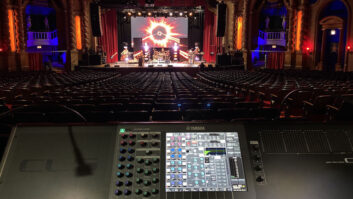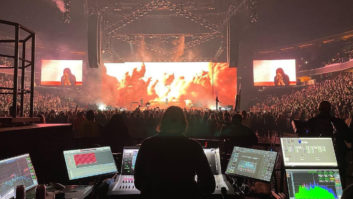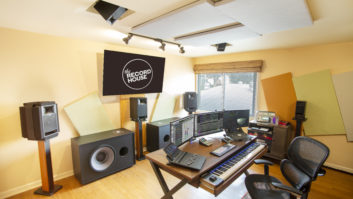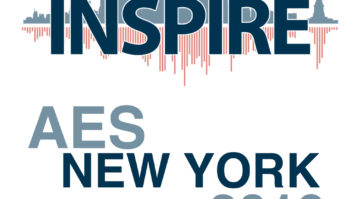As I write this, the NAB Show is going full tilt in Las Vegas. Obviously, NAB is aimed at people involved in audio and video broadcast, but the truth is that there’s a lot happening that’s of interest to anyone working in audio. Sessions planned for the convention include “Fast Tracking Radio’s Future,” “From Podcast to Broadcast,” “NAB Show Career Fair,” and “Latest Updates on Audio Over IP & AES67.” On the lighter side, there will be a live performance by award-winning country music band Old Dominion.
We go to trade shows for a lot of different reasons: to learn about technology, to see new products, to discuss the latest changes in the law that may affect our work, to visit with old friends, and perhaps most importantly to network. I hate that word. “I’m good at networking.” Does that mean I’m a packet of information? Maybe it means my brain functions like an i7. Ugh. Of course, networking is important to anyone who wants to remain relevant in their field, because if people don’t know you’re alive, they’re not going to call you for work.
You might have noticed that I sneaked in a mention of AES67, which refers to an audio networking protocol that was announced back in 2013. Audio networking has been around for about 20 years, but it seems like it has exploded in the past year or three. The idea that we can route audio using CAT5 or CAT6 (Ethernet) hardware is very attractive: It’s cheap (the audio industry didn’t have to invent a new connector), it carries tons of channels (compare that with the weight and clumsiness of copper snake for a hundred audio channels), and audio can be transferred bi-directionally (you won’t even need an XLR turnaround at FOH to route talkback!). I dare say that in an emergency, you might be able to go to an office supply store for a replacement snake, and certainly carrying an extra (or two) 100-foot CAT5 cables won’t break the bank, the suspension on the gear truck, or your back.
Networked audio using Ethernet hardware really flexes its muscle when applied to large-scale systems like those used in stadiums, concert halls and even schools When we designed the new music studios at Mercy College a few years ago, we were able to run plenty of CAT5 “just in case,” without adding much to the budget.
Unfortunately, there’s one aspect of audio networking that reminds me of the prehistoric days of synthesizer “networking,” meaning pre-MIDI. Every manufacturer had its own communication protocol, and you’d be hard pressed to make a Roland synth talk to, say, an Oberheim sequencer (though people managed to do so). The synth guys had the smarts to realize that if they created a common language, everyone would benefit. And when MIDI got its footing, everyone did. All hail Dave Smith.
I see a similar issue with audio networks, where various manufacturers feel they have the “best” protocol. Of course the various protocols don’t speak to each other (though “bridges” do exist), so if you want to create a network using components from different manufacturers, you might hit a wall. A lot of companies have adopted Dante or AVB, which has certainly improved the situation, allowing gear from Manufacturer A to communicate with gear from Manufacturer B. But if Manufacturer C implements a different protocol, then its device can’t talk to those made by Manufacturers A and B. That’s where AES67 steps in.
AES67 is an open, high-performance standard for transmitting audio over IP. It standardizes audio streaming and synchronization, facilitating the ability of products from one system to work with products of another system. AES67 acts as a bridge between these protocols by creating a set of rules for them to follow so that they can communicate over the same network. In other words Dante may not speak AVB and vice-versa, but if they both speak AES67, then they can share audio on the same network. AES67 operates on common Ethernet networks, is fully scalable and can route hundreds of audio channels at 48 kHz.
What’s really valuable and exciting about AES67 is that—much like MIDI—an AES67-compliant device has a future. We’re already seeing AES67-compliant interfaces, just like we saw many devices implement AES3. Several manufacturers are offering virtual AES67 soundcards for Windows and Mac OS, which means that a computer can easily be part of the network in a small studio, while being ready to scale up to a larger network should the need arise. It’s going to help extend the life of our gear, which is a beautiful thing. We’ll be discussing new developments as they unfold.
In the meantime, here are some links that provide more information:
https://www.audinate.com/solutions/dante-overview
http://medianetworkingalliance.com/faq-aes67/
https://www.presonus.com/learn/technical-articles/An-Introduction-To-Avb-Networking







